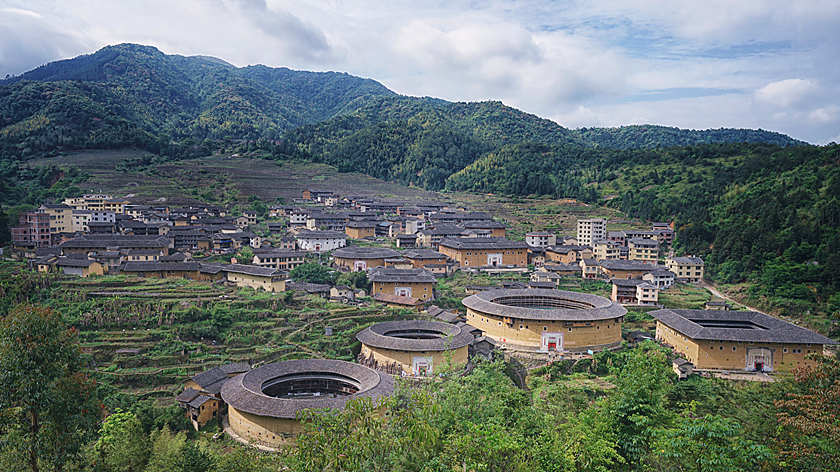Chinese Name: 初溪土楼群 Pronunciation: chū xī tǔ lóu qún
Suggested Visiting Hours: 1-3 Hours
Admission Ticket Fare: 70 Yuan (All year round)
Building Area: About 14.72 hectares
Building Time: In the 13th century
Building Function: Residence area, exhibition rooms
Best Visiting Time: All year round
Address: Chuxi village, Xiayang Town, Yongding County Fujian Province
|
Scenic Area Opening Hours
|
Ticket Office Opening Hours
|
|
| 24 hours | 6:00-17:00 | |
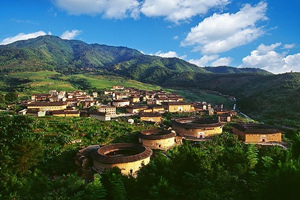
Located in Xiayang Town, Yongding County, Chuxi Tulou Cluster has been built from the early Ming Dynasty to modern times. There are nearly 100 earth buildings lying on the hillside, backed by terraced fields of 1000 mu. The earth building group is a perfect combination of human and nature, and the model of harmonious coexistence. The Chuxi Tulou Cluster is known as the most impressive earth building group.
Chuxi Tulou Cluster is one of the "three groups and two buildings" in Yongding County. It consists of five round buildings and dozens of square buildings (mainly jiqing Building, Yuqing Building, Shengqing Building, Huaqing Building, Gengqing Building, Tinqing building, Fuqing Building, Gongqing Building, Fanqing Building, Shanqing building and so on). The main types of earth buildings are rectangular, square, circular, hexagonal, etc. All buildings of Chuxi Tulou Cluster with a "qing" in the middle of the name which means the flourishing population and luck.
In May 2006, Jiqing Building was listed as a national key cultural relic protection unit. In July 2008, 10 buildings in Chuxi Tulou Cluster were listed in the World Heritage List. Jiqing Building, built during the Yongle Period of the Ming Dynasty, is known for its unique structure and called "the most unusual earth building with the largest number of stairs".
The architectural style of Chuxi Tulou Cluster reflects high aesthetic art and historical value, and show the wisdom and creative ability of Chinese laboring people. The scale and the cultural atmosphere of Chuxi Tulou Cluster are rarely seen around the world, showing the heritage of the Central Plains and the hakka folk customs. The Chuxi Tulou Cluster is located closely to the mountain and have a reasonable layout which embodies the integration of human and nature. It has a strong hakka residential architecture characteristics.
If tourists have enough time, they can stay at Tulou for one night to experience the national culture and beautiful scenery, and they can also taste local cuisine.
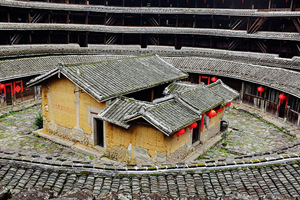
Among the World Heritage Tulou buildings in Fujian, the oldest and youngest buildings are all located in Chuxi Tulou Cluster. The 66m-diameter Jiqing building is 600 years old, while the 31m-diameter Shanqing building is only 30 years old.
In the 20th century, Americans satellites used to take Chuxi Tulou Cluster as a missile launch site, and American put these materials in the White House. It was until President Nixon's visit to China that they learned that it was just a kind of residential building called "tulou".
In July 2008, Fujian's tulou, including Chuxi Tulou Cluster, was listed in the World Cultural Heritage List.
In November 2009, Chuxi Tulou Cluster was listed as the seventh batch of provincial cultural relics’ protection units in Fujian Province.
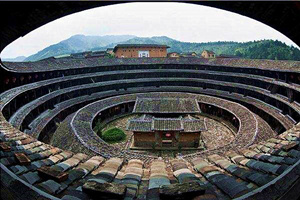
Jiqing Building is the oldest building among the Chuxi Tulou Cluster and was built in the Ming Dynasty. It is composed of two circular rings, with 9 observation towers and multiple staircases on the outer wall of the top floor. There are four watchtowers under the eaves of the outer wall of the fourth floor, and the whole building has only one gate.
In general around buildings, small ones have two public staircases, and four public staircases are set up in large ones. The bottom floor is interlinked with each other and accessible to each other. In Jiqing Building, each family on the first floor installs staircases from the first floor to the fourth floor, and the passageways on each floor are separated by wooden boards. 72 staircases divide the whole building into 72 independent units. The rooms, stairs, and partitions are all made of fir wood, and there is no one nail inside the whole building.
After nearly six centuries, the Jiqing Building still stands upright with one raw earth wall which is up to two meters thick. Jiqing Building is composed of two ring buildings, with 9 watchtowers and multiple staircases. There are four watchtowers under the eaves of the outer wall of the fourth floor, and the whole building has only one gate, which is easy to defend and difficult to attack.
Different from other buildings, there is no well inside the Jiqing Building and water can only be drawn from the river next to the building. Besides, there is only one gate, which is different from other buildings with three or four gates. In the turbulent times, the model of gathering and living independently of each other in Jiqing Building not only eliminates the fear of being isolated and helpless, but also avoids the shortcoming of common buildings in which there is no private space and have too much excessive noise.
Jiqing Building set up a large hakka folk museum, exhibiting many valuable cultural relics of all eras. More than 50 exhibition rooms have been initially built on the first floor of Jiqing Building, displaying carving art, opera, musical instrument workshop, pastry shop, old medicine shop, block printing, textile, academy, wine workshop, fortune-teller, folk clothing, agricultural equipment, etc. In addition, ancient documents, imperial edicts and plaques, civilian costumes of the Ming and Qing Dynasties, and articles for use are also on display.
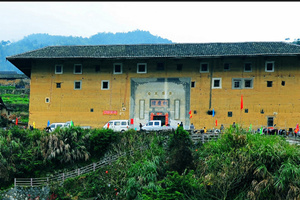
Built in the Qing Dynasty, Shengqing Building is a square tulou residential building, sitting in the south, covering area of 2,310 square meters. The structure is composed of two inside and outside square buildings. Hakka people worship the martial arts. In ancient times, this place gathered the young people of Chuxi village to practice martial arts almost every night.
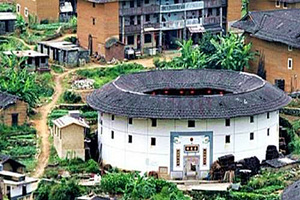
Built in 1979, Shanqing Building is a circular earth dwelling which is near to the Jiqing Building. Sitting south to the north, covering an area of about 630 square meters, it has three floors. The corridor and patio of the first floor of Shanqing Building are all paved with square granite of the same specification, with good lighting and ventilation effect. The first floor corridors and patios are paved with square granite and the outer walls are whitewashed. The outer wall of Shanqing Building is white, which also forms a strong color difference with other earth yellow buildings.
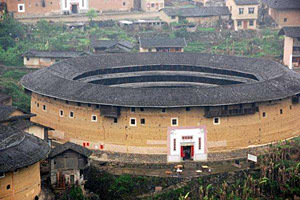
Built in the Qing Dynasty, Gengqing Building is a round earth dwelling, which sits in the south. It covers an area of about 660 square meters and has three floors. Although the size of the building was small, the defense capability of the building was strong. The thickest part of the outer wall could be up to one meter, which effectively protected the hakka people in the building from wars and other dangers during turbulent period.
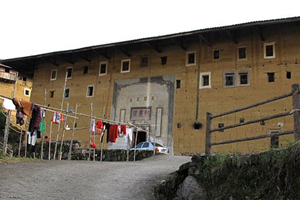
Built in 1949, Gongqing Building is a hexagonal residential building, which located in the south and facing the north, covering an area of 3,500 square meters with four floors. Gongqing Building is low in the front and high in the back. There are 152 halls and rooms inside the whole building, and only have one gate to enter. The ancestral hall is located in the middle of the inner courtyard. It is a single-storey brick and wood building.
Ticket Office →The Observation Deck → Xuqing Building → Dock Street → Jiqing Building→Shengqing Building → Shanqing Building → Gengqing Building→ Gongqing Building → Exit from the Parking lot
Take bus Jinfeng Line at Yongding Bus Station and get off at Xiayang Town, and then carpool with others to Chuxi Tulou Cluster.
